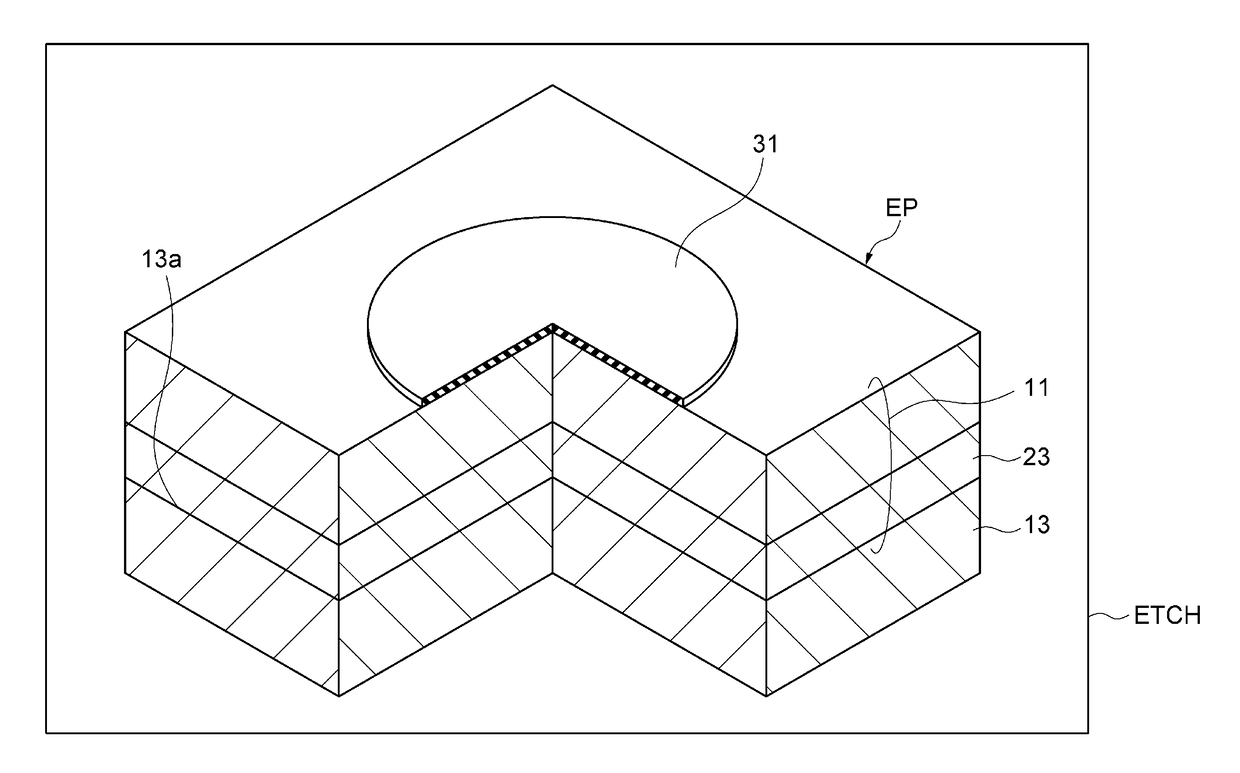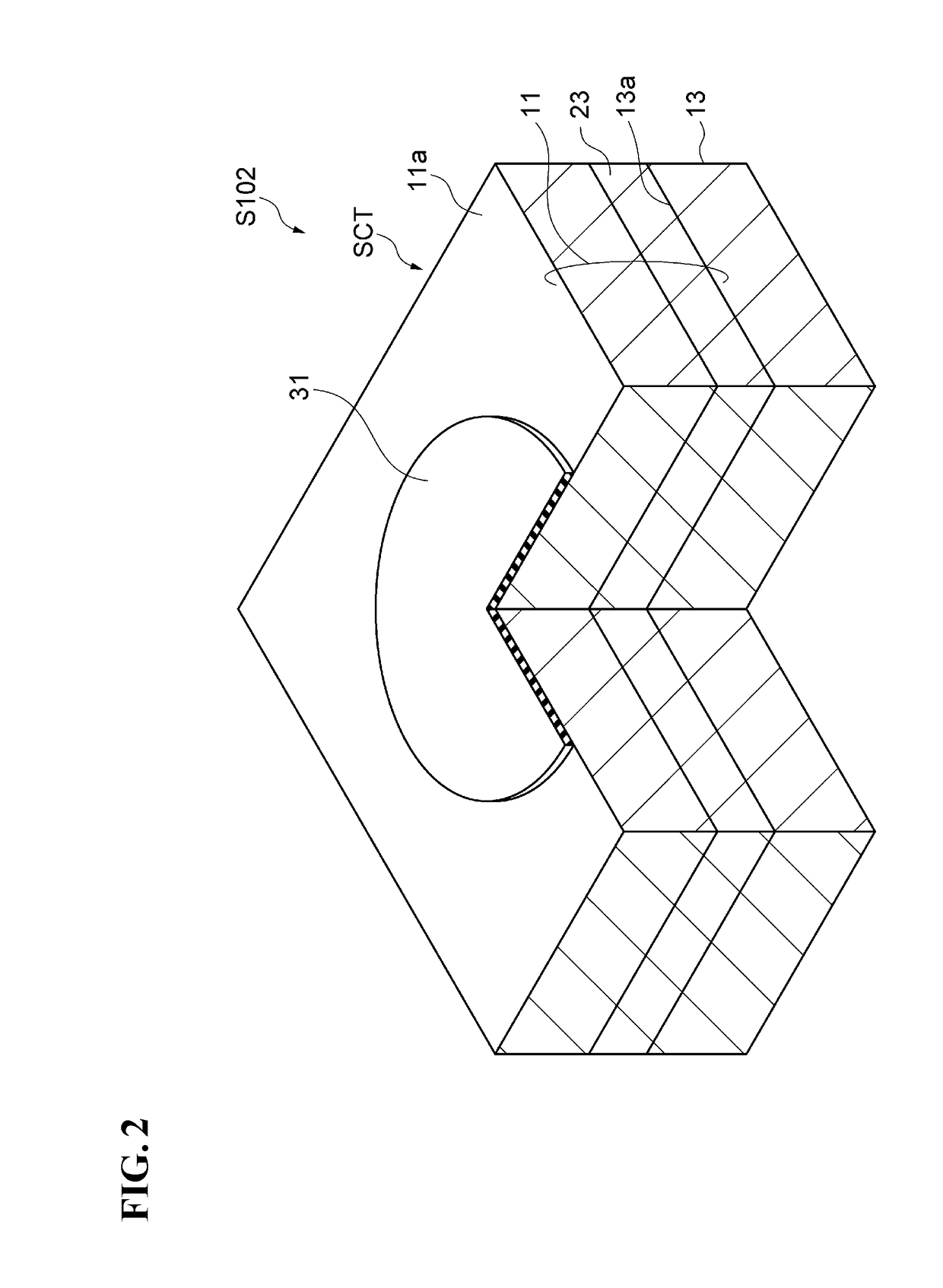Method of fabricating surface-emitting laser
a surface-emitting laser and laser technology, applied in the direction of laser details, semiconductor/solid-state device testing/measurement, lasers, etc., can solve the problems of increasing the difficulty in detecting and not easy to detect the etching end poin
- Summary
- Abstract
- Description
- Claims
- Application Information
AI Technical Summary
Benefits of technology
Problems solved by technology
Method used
Image
Examples
example
[0055]A time period for observing photoluminescence P1: 18 seconds[0056]A time period after losing the photoluminescence P1 before start of the etching of the lower contact layer: 30 seconds
[0057]The end point detection may be determined after waiting for an elapse of time from detection of the photoluminescence P1. Specifically, the end point is determined with reference to a peak of the intensity of the optical spectrum in the measurement of photoluminescence. According to this method of fabricating, when the residual film of the upper stacked semiconductor layer is substantially eliminated, the optical confinement effect of the upper stacked semiconductor layer is also lost, and the strong photoluminescence from the active layer is temporarily observed before start of the etching of the active layer.
[0058]Meanwhile, the interference end point monitor utilizes the fact that the first stacked semiconductor layer 15 includes an AlGaAs / AlGaAs multi-layer and the substrate 13 includes...
PUM
 Login to View More
Login to View More Abstract
Description
Claims
Application Information
 Login to View More
Login to View More - R&D
- Intellectual Property
- Life Sciences
- Materials
- Tech Scout
- Unparalleled Data Quality
- Higher Quality Content
- 60% Fewer Hallucinations
Browse by: Latest US Patents, China's latest patents, Technical Efficacy Thesaurus, Application Domain, Technology Topic, Popular Technical Reports.
© 2025 PatSnap. All rights reserved.Legal|Privacy policy|Modern Slavery Act Transparency Statement|Sitemap|About US| Contact US: help@patsnap.com



